The competition for Designers & Artists 4 Genomics Award (DA4GA) invites artists and designers to team up with the Netherlands most prestigious Genomics Centres and produce new artworks in the field of sustainability, food, health, bio-informatics, agriculture, and safety. So far the competition was only open to people living, studying or working in The Netherlands.
 Jalila Essaidi, 2.6 g 329 m/s (image Jalila Essaidi)
Jalila Essaidi, 2.6 g 329 m/s (image Jalila Essaidi)
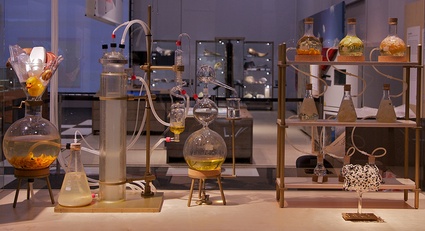 Maurizio Montalti, System Synthetics (image Maurizio Montalti)
Maurizio Montalti, System Synthetics (image Maurizio Montalti)
But the good news is that the first edition was so successful that The Netherlands Genomics Initiative, the Centre for Society and Genomics and Waag Society have decided to open up their second call for application to artists and designers from any country. Three projects will be selected and awarded € 25.000 for the realization of the final piece. The only condition is for you to have graduated in the past five years. Application form and other info, this way please!
A few weeks ago, i was in The Netherlands to see the result of the first competition. You might remember that i had interviewed the 3 winning artists/designers just as they were about to start developing their projects (The Miscroscopic Opera, 2.6g 329m/s, aka the ‘bulletproof skin’ and System Synthetics) so i was curious to see whether the final pieces lived up to their (and my!) expectations. The show is up until January 8th at Naturalis, the Netherlands Centre for Biodiversity which is located in Leiden, a short train ride from Amsterdam.
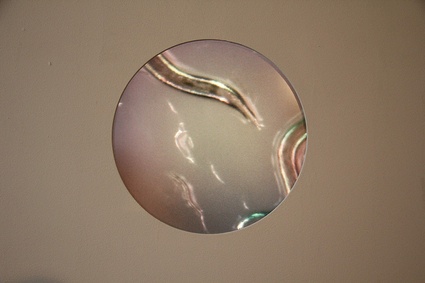 Matthijs Munnik, Microscopic Opera (detail)
Matthijs Munnik, Microscopic Opera (detail)
The best surprise for me was definitely the Microscopic Opera, developed by Matthijs Munnik in collaboration with Richard de Boer from the Netherlands Consortium for Systems Biology. In this installation, the fluid movements of the humble lab worms C.elegans are turned into sounds and images. This tiny worm is used routinely as a model organism in research laboratories around the world. Its ‘participation’ to the artwork is particularly relevant to genomics since C.elegans is the first multicellular organism to have its genome completely sequenced.
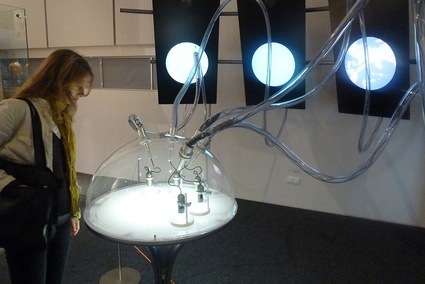 Matthijs Munnik, Microscopic Opera (de_buurman has much better images)
Matthijs Munnik, Microscopic Opera (de_buurman has much better images)
A software tracks and converts the movements of the worms into various sounds that range from abstract opera singing to dynamic soundtrack of background sounds. The public can follow the activity of the creatures on a series of screens, they display the images magnified by the microscopes installed above the petri dishes containing each from 100 to 1000 worms.
Microscopic Opera could have been yet another ‘new media art’ installation controlled by a living being but, somehow, the modesty of the performers, the pleasant sounds they generate and the control and dignity they gain in the process made for a surprisingly moving experience.
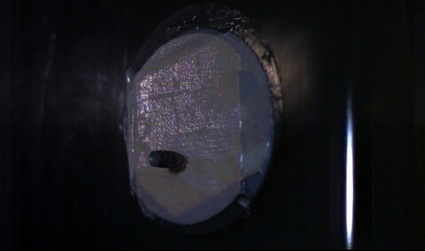 Bulletproof skin stopping the bullet (image Jalila Essaidi)
Bulletproof skin stopping the bullet (image Jalila Essaidi)
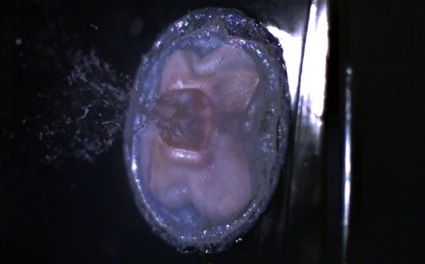 Bulletproof skin being pierced (image Jalila Essaidi)
Bulletproof skin being pierced (image Jalila Essaidi)
The project that got most headlines in newspapers and blogs is 2.6g 329m/s, developed by Jalila Essaidi with the help of Forensic Genomics Consortium Netherlands. The objective of her project was to create a a bulletproof human skin, the kind DARPA would pay fortunes to get their hands on. Except that the project is first and foremost the trigger for a reflection about the many social, political, ethical and cultural issues concerning safety.
The rather unappealing result is a hybrid between spider’s silk produced by transgenic silkworm and human skin cells:
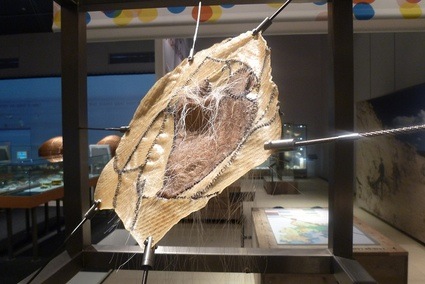
In an interview with Neva Lukic, the artist explained why her project explores the concept, relativity and borderlines of safety: Safety is relative. You can use multiple layers of this skin but there will always be something else that can harm you. A nice example is made by Lucas Evers, the initiator of this project, who told me that before there were no safety belts in the car, the child was protected only with his father’s hand and that was enough for the child to feel safe… The question of this work is also about the border. Scientists are also thinking about that. So it has to become accessible to the whole society. Just as safety is relative, so is the word bulletproof. For example, I have recorded two impacts of a slower bullet, the same caliber but with a lower speed. The bullets didn’t pierce the skin, but in both situations they showed very different results. One of them got embedded in the ballistic gel, wrapped in the silk-skin, much like an arrow in the silk vest of a warrior during the time of Genghis Kahn would have done. The other one was on a piece of skin with more spider silk layers and the bullet got embedded in the skin itself and not all the way inside the ballistic gel. Two entirely different results, both being bulletproof.
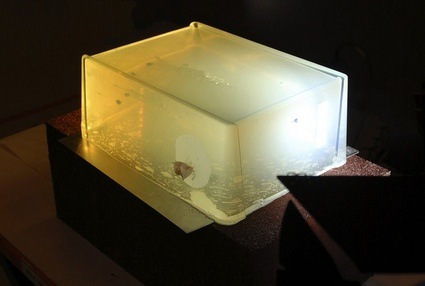 Ballistic gel, used to simulate the density and viscosity of human muscle tissue (image Jalila Essaidi)
Ballistic gel, used to simulate the density and viscosity of human muscle tissue (image Jalila Essaidi)
Jalila has recently posted on her blog, the extract of Sam Gaty & George Costakis‘ upcoming A Documentary Film about Synthetic Biology. The short video below gives a quick overview of the work being done in a farm in Laramie, WY whereby spider silk is being spun from goat milk.
The third project is System Synthetics, by designer Maurizio Montalti in cooperation with the Kluyver Centre for Genomics of Industrial Fermentation. The ambitious work attempts to study the possibilities of production of the bio fuel out of the degradation process of the plastic waste using two fungal organisms. A first type of fungi would break down plastic waste, a yeast would then take over and produce bio-ethanol out of it.
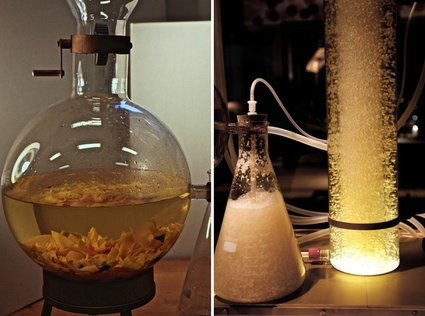 (images Maurizio Montalti)
(images Maurizio Montalti)
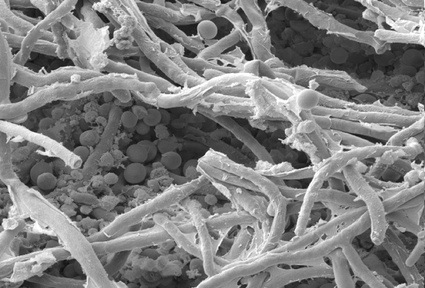 Scanning Electron Micrographs (SEM), showing the interaction between fungus, yeast and plastic material
Scanning Electron Micrographs (SEM), showing the interaction between fungus, yeast and plastic material
The final installation doesn’t showcase the successful outcome of the project (the whole process would take years to complete) but it documents the intention, the experiments and points to the ecological burden that plastic imposes on our planet. There is a series of objects in a window that deconstruct the process from the moment plastic is broken down by men into smaller particles to phase when plastic waste would finally be transformed in an alternative energy source.
You might get a better idea of the whole project by watching this film:
The three works are on show at Naturalis, Leiden until January 8th 2012. The center has also uploaded videos that present the winning projects.
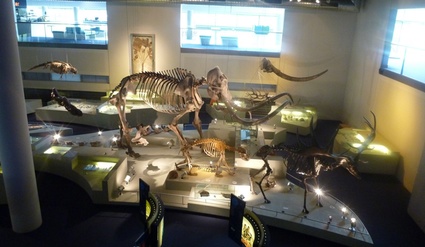 Inside the Naturalis
Inside the Naturalis
Previously: The Miscroscopic Opera, 2.6g 329m/s, aka the ‘bulletproof skin’ and System Synthetics.
